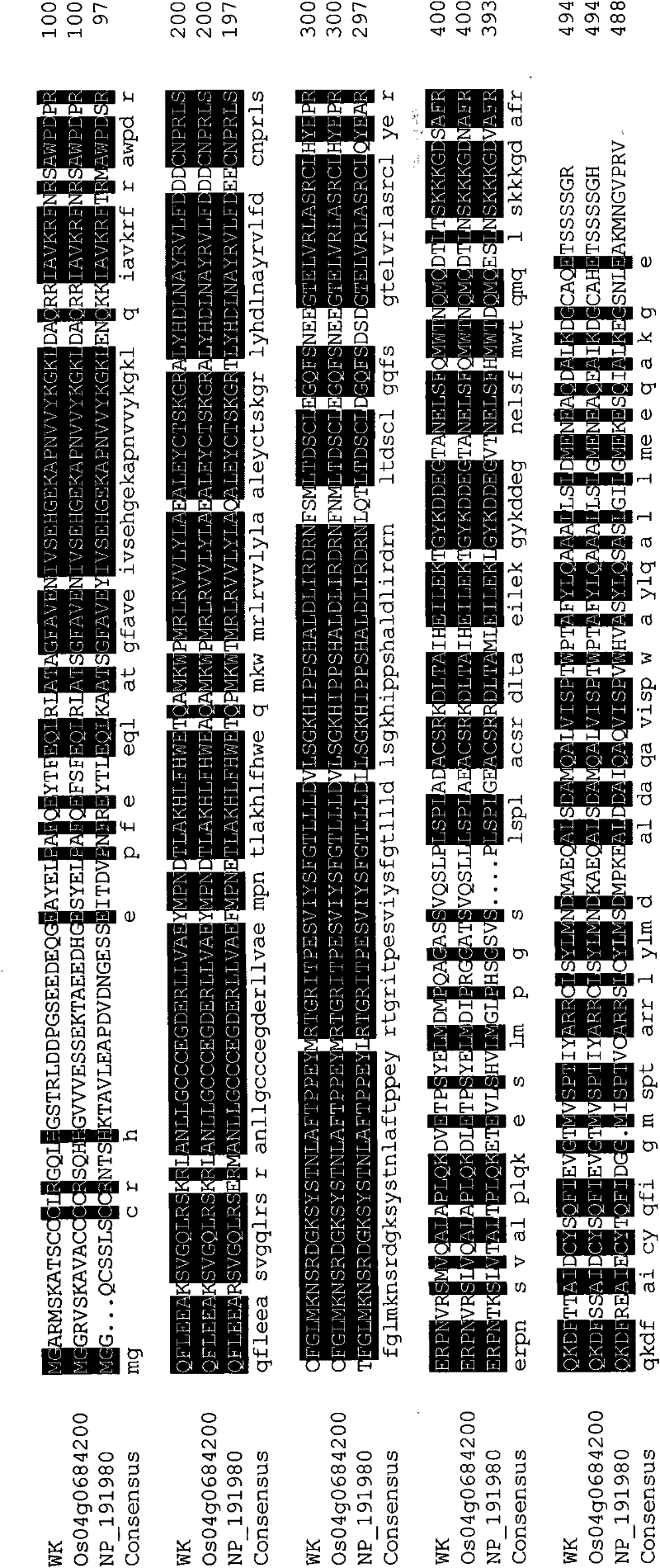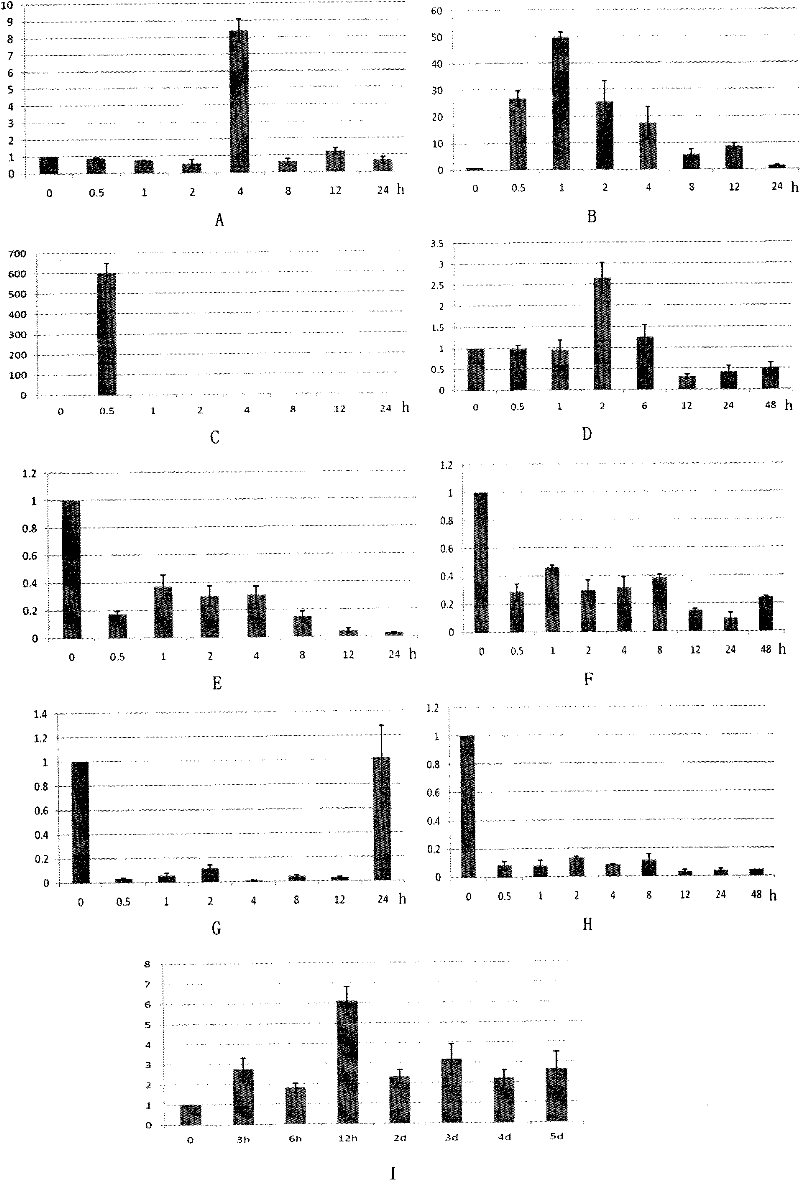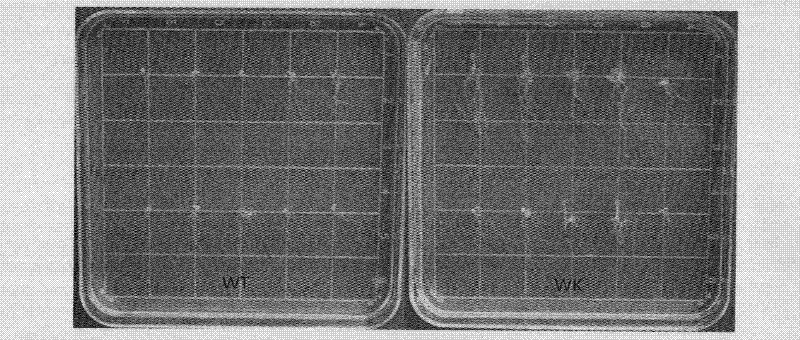Plant stress tolerance related protein TaTPRPK1, encoding gene thereof, and application thereof
A technology of plant stress tolerance and stress tolerance, applied in the direction of plant genetic improvement, botany equipment and methods, applications, etc., can solve the problems of comprehensive improvement of stress resistance of difficult plants, and achieve the effect of promoting development
- Summary
- Abstract
- Description
- Claims
- Application Information
AI Technical Summary
Problems solved by technology
Method used
Image
Examples
Embodiment 1
[0050] Embodiment 1, the cloning of TaTPRPK1
[0051] 1. Isolation of mRNA
[0052] The three-leaf stage seedlings of triticale triticifolia (National Germplasm Bank, No. ZM242) grown in hydroponics for about 10 days were treated with NaCl for 2 hours, quick-frozen in liquid nitrogen, and stored at -80°C for later use.
[0053] Total RNA was extracted from wheat leaves by Trizol method (TianGen), and reverse transcriptase XL (AMV) was used for first-strand cDNA synthesis. The ds cDNA was synthesized by SMART method, and the PCR product was detected by 1.0% agarose gel electrophoresis.
[0054] 2. Acquisition of the full-length sequence of the TaTPRPK1 gene
[0055] The full-length sequence of wheat dual-specificity protein kinase gene was obtained by 5'RACE and 3'RACE methods.
[0056] The protein shown in Sequence 1 of the sequence listing is named TaTPRPK1 protein, which consists of 494 amino acid residues and has a conserved dual-specificity protein kinase activation reg...
Embodiment 2
[0057] Example 2, real-time fluorescent quantitative PCR analysis of the expression characteristics of TaTPRPK1
[0058] 1. Coercion treatment
[0059] Seedling age is the triticale seedling of 10 days, carries out following treatment:
[0060] (1) Drought treatment: Take out the hydroponic wheat seedlings to absorb the water on the roots, place them on dry filter paper, and cultivate them in a dry environment for 30 minutes, 1 hour, 2 hours, 4 hours, 8 hours, 12 hours, and 24 hours. Materials were quick-frozen in liquid nitrogen and stored at -80°C for later use.
[0061] (2) Salt treatment: the wheat seedlings were placed in 2% of NaCl and Na 2 SO 4 In the sodium salt solution (NaCl and Na 2 SO 4 The mass percentage is 3:2), light cultured for 30 minutes, 1 hour, 2 hours, 4 hours, 8 hours, 12 hours, and 24 hours, respectively, the materials were taken out, quick-frozen in liquid nitrogen, and stored at -80°C for later use.
[0062] (3) Abscisic acid treatment: put the ...
Embodiment 3
[0081] Example 3, TaTPRPK1 improves the salt tolerance of Arabidopsis
[0082] 1. Construction of recombinant expression vector
[0083] 1. Cloning of TaTPRPK1 gene
[0084] A pair of primers (TaTPRPK1-121F and TaTPRPK1-121R) were designed according to the sequence of the TaTPRPK1 gene, and BamHI and XhoI restriction sites were introduced at the ends of the primers respectively, and TaTPRPK1 was amplified by PCR using the cDNA of wheat wheat as a template.
[0085] TaTPRPK1-121F: 5'-TCCCCCGGGATGGGCGCCAGGATGTC-3';
[0086] TaTPRPK1-121R: 5'-GGACTAGTTCAGTTCATATTCAGCGTCCG-3.
[0087] The PCR amplified product was subjected to 1.2% agarose gel electrophoresis, and a band of about 1.5 Kb was recovered and purified using Agarose Gel DNA Purification Kit Ver.2.0 (TaKaRa Company, Code No.: DV807A).
[0088] 2. Construction of recombinant expression vector
[0089] ① Use restriction endonucleases BamHI and XhoI to digest step 1 to recover the purified PCR product, and recover the d...
PUM
 Login to View More
Login to View More Abstract
Description
Claims
Application Information
 Login to View More
Login to View More - R&D
- Intellectual Property
- Life Sciences
- Materials
- Tech Scout
- Unparalleled Data Quality
- Higher Quality Content
- 60% Fewer Hallucinations
Browse by: Latest US Patents, China's latest patents, Technical Efficacy Thesaurus, Application Domain, Technology Topic, Popular Technical Reports.
© 2025 PatSnap. All rights reserved.Legal|Privacy policy|Modern Slavery Act Transparency Statement|Sitemap|About US| Contact US: help@patsnap.com



